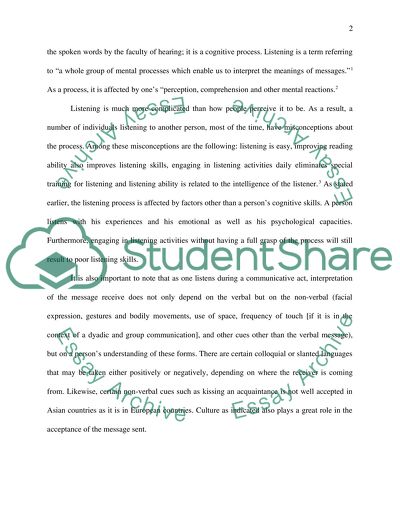Cite this document
(“Essay on effective listening Example | Topics and Well Written Essays - 1000 words”, n.d.)
Retrieved from https://studentshare.org/psychology/1505456-essay-on-effective-listening
Retrieved from https://studentshare.org/psychology/1505456-essay-on-effective-listening
(Essay on Effective Listening Example | Topics and Well Written Essays - 1000 Words)
https://studentshare.org/psychology/1505456-essay-on-effective-listening.
https://studentshare.org/psychology/1505456-essay-on-effective-listening.
“Essay on Effective Listening Example | Topics and Well Written Essays - 1000 Words”, n.d. https://studentshare.org/psychology/1505456-essay-on-effective-listening.


